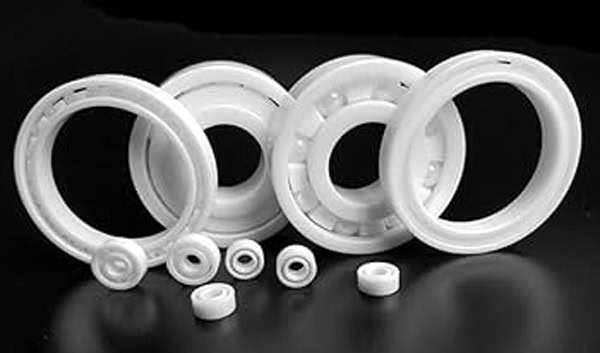
Bearing Manufacturer & Supplier
Specialize in ball bearings, roller bearings, thrust bearings, thin section bearings etc.
Impact of Retainers on Ceramic Bearings
Ceramic bearings, renowned for their high temperature resistance, corrosion resistance, low friction coefficient, and high hardness, find extensive application across various industrial sectors. Ceramic bearings can be broadly categorized into two types based on the presence of retainers: ceramic bearings with retainers and ceramic bearings without retainers. These two types exhibit distinct differences in performance and application. This article provides a detailed comparison and analysis of these two types of ceramic bearings.
Table of Contents
ToggleCeramic Bearings with Retainers
Ceramic bearings with retainers feature a design that includes a retainer structure to guide and secure the movement of rolling elements. The role of the retainer is to reduce friction between rolling elements, thereby enhancing bearing rotational accuracy and stability. Additionally, the retainer can withstand a portion of external loads, thereby improving the bearing’s load-carrying capacity. Ceramic bearings with retainers offer the following advantages:

High rotational accuracy: The design of the retainer ensures uniform distribution of rolling elements, minimizing eccentricity and enhancing bearing rotational precision.
Low friction: The contact area between the retainer and rolling elements is minimal, reducing frictional resistance and energy loss.
Strong load-bearing capacity: The retainer can bear a portion of external loads, reducing stress on the rolling elements and extending bearing lifespan.
High speed capability: With the presence of a retainer, rolling elements can better adapt to high-speed rotation, increasing the bearing’s maximum rotational speed.
However, ceramic bearings with retainers also have some limitations:
High cost: Due to additional manufacturing processes and materials required, ceramic bearings with retainers tend to have higher costs.
Not suitable for all applications: For some specific applications requiring high rigidity or low friction coefficients, ceramic bearings without retainers may be suitable.
Ceramic Bearings without Retainers
Ceramic bearings without retainers(Full complement ceramic ball bearings) do not feature a retainer structure; instead, rolling elements directly contact the bearing race or the opposite ring. This design simplicity offers some unique performance characteristics:

Simple structure: Ceramic bearings without retainers have a relatively simple structure without complex retainer components, resulting in lower manufacturing costs.
High-speed performance: Without the hindrance of a retainer, ceramic bearings without retainers exhibit better dynamic performance during high-speed rotation.
Suitable for special applications: For applications requiring high rigidity or low friction coefficients, ceramic bearings without retainers can better meet these demands.
However, ceramic bearings without retainers also come with limitations:
Limited load-carrying capacity: Without a retainer to bear some of the load, ceramic bearings without retainers generally have lower load-carrying capacities.
Lower rotational accuracy: Due to the less fixed position of rolling elements, ceramic bearings without retainers may not achieve the same level of rotational precision as those with retainers.
Selection Advice
When choosing between ceramic bearings with retainers and those without, consider the following factors:
Application requirements: Select the appropriate type based on specific application needs such as speed, load, and operating environment.
Cost considerations: If cost is a concern, ceramic bearings without retainers may be a economical choice.
Special requirements: For applications demanding high rigidity or low friction coefficients, ceramic bearings without retainers may be preferred.
Maintenance and replacement: Ceramic bearings with retainers typically offer better maintenance and ease of replacement.
Both ceramic bearings with retainers and those without possess unique performance advantages and application areas. Choosing the right type is crucial for ensuring equipment operates smoothly and maximizing economic benefits. Continued advancements in technology will further drive the widespread application of ceramic bearings through the development of new materials and manufacturing processes.
